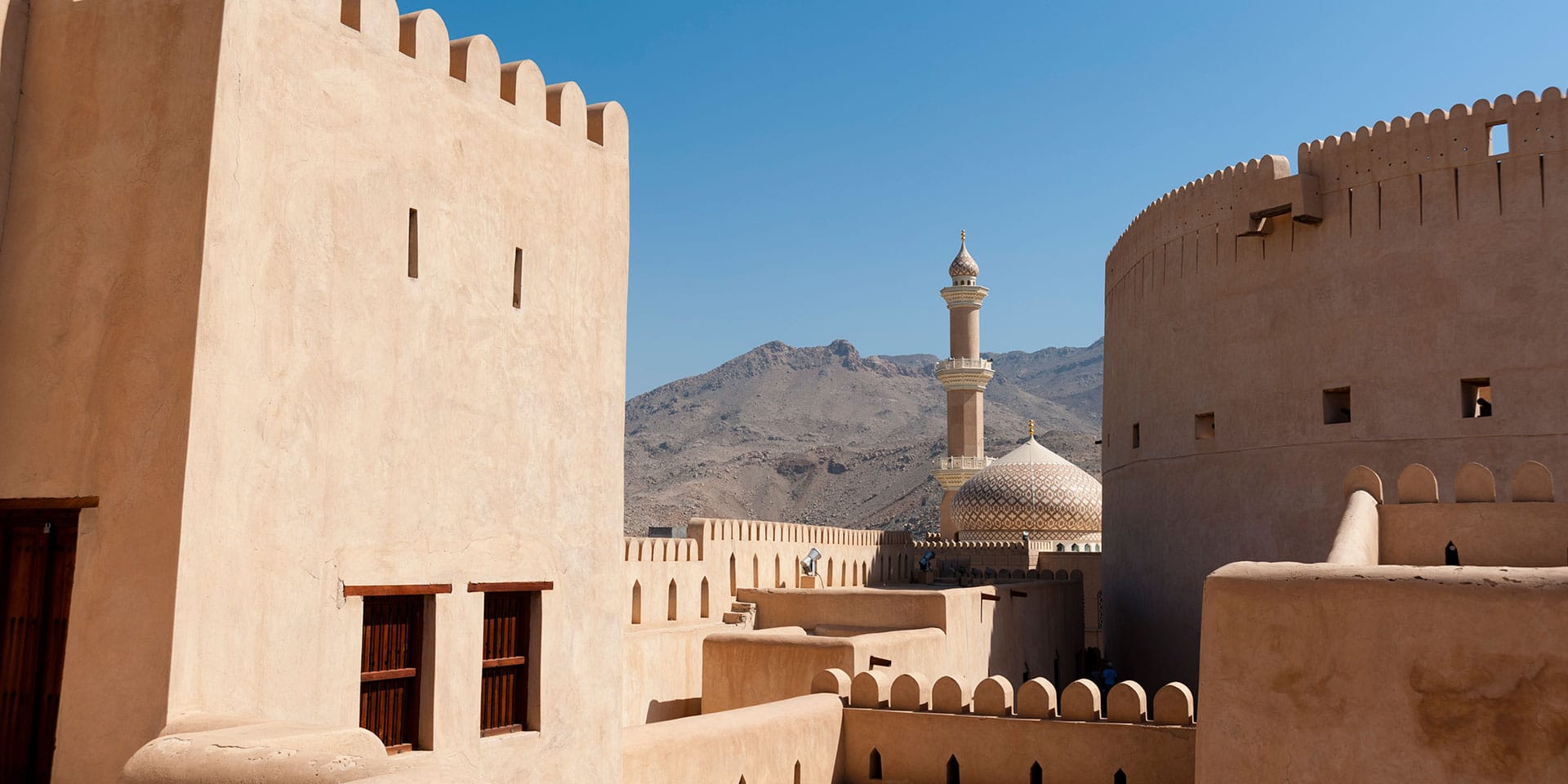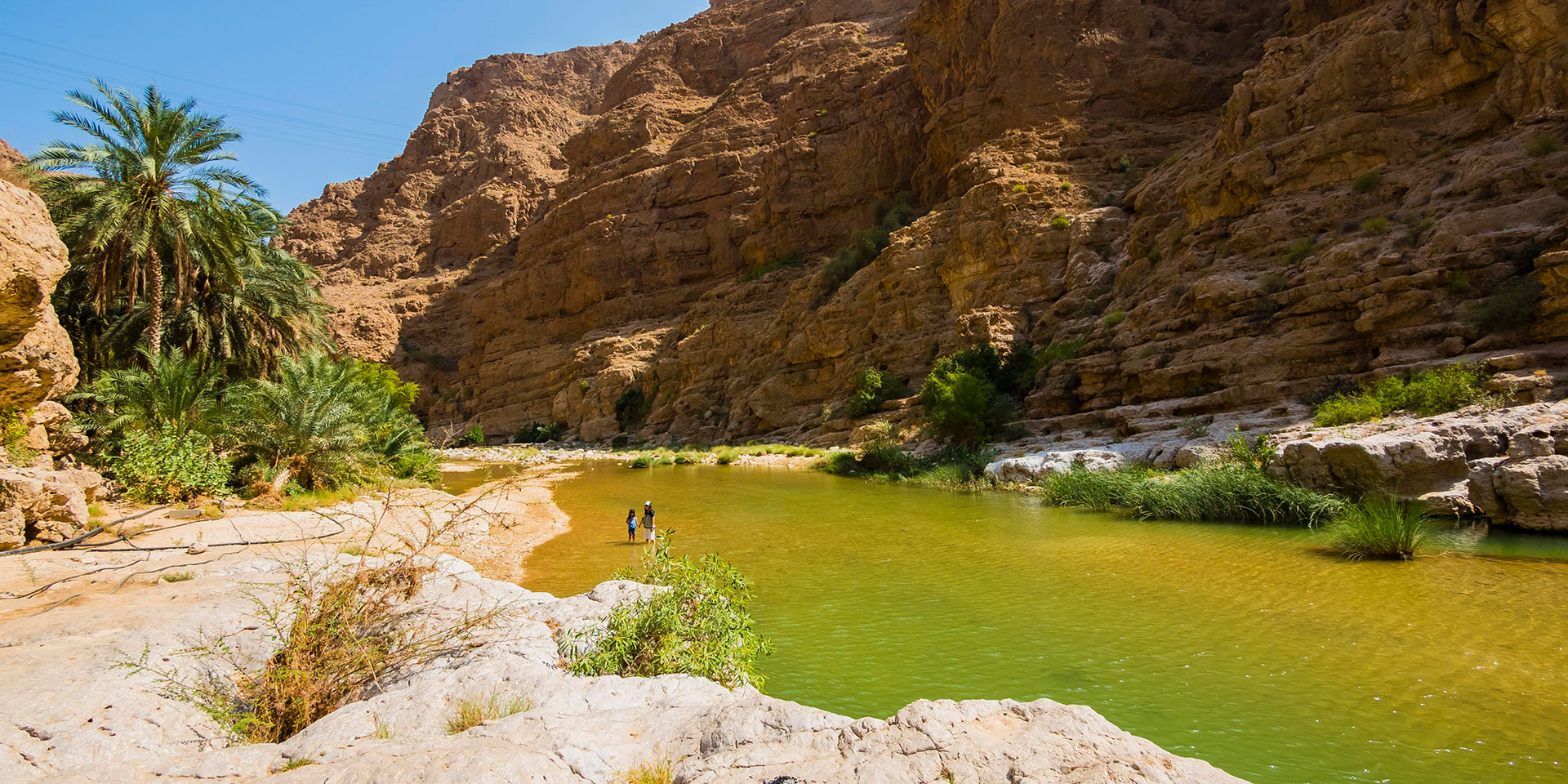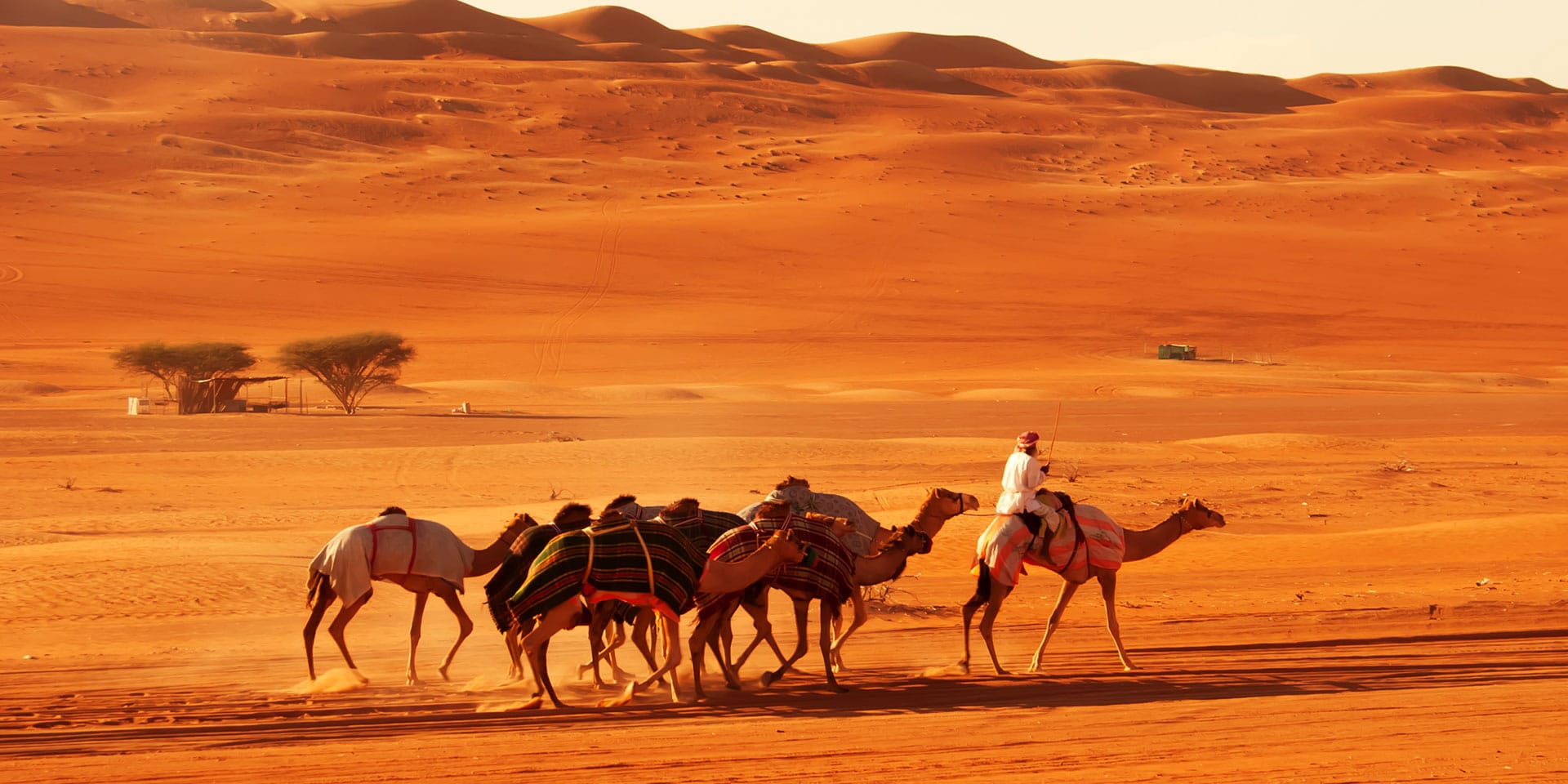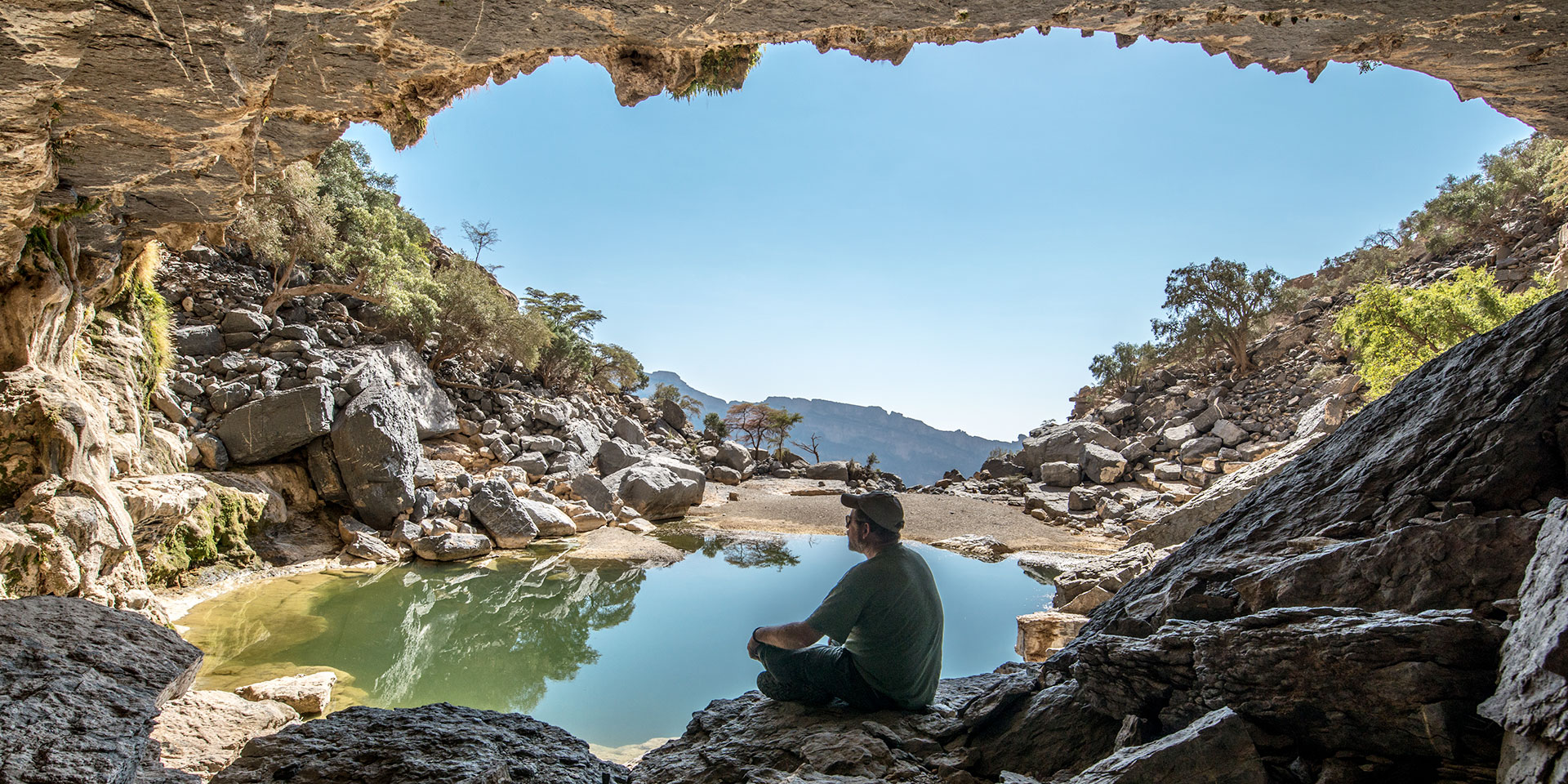Visiting the historic and picturesque Sultanate of Oman without leaving the capital is like saying you have visited the Louvre without stepping foot inside. Indeed, Muscat is a spectacular city and the perfect jumping-off point for exploring the many natural and historic gems waiting to be discovered near the ancient capital.
Much of Oman historically developed around Muscat, and the city’s geographic location at the meeting point of the sea and desert means that there is no shortage of day trips to choose from after spending a few days in the white city.
Whether you want to experience undisturbed mountains and deserts that have sheltered tribes for millennia or you prefer to spend the day visiting historic fortifications, there is something for you close to Muscat. Rent a car and read on, but as always, please check for travel restrictions and closures before planning your vacation.
Visit Oman’s Historic “Alternative” Capital
Perched above the city of Nizwa rises the imposing yellow-stone Nizwa Fort, where imams once governed much of the Omani interior. As you approach the 17th-century fortification, you will soon realize why enemies never did capture the former second capital of Oman.

Built in the 1650s on the orders of Imam Sultan Bin Saif Al Ya’rubi, Nizwa Fort was used as the administrative seat of Oman’s imamate for almost 300 years and since the 1970s has attracted intrigued visitors from across the Middle East.
The most striking part of the fort is its looming, round tower, 30 meters (98 feet) of which sit below ground and 30 above. The 24 openings at the top of the tower were used to shoot mortars and cannons, with space for an additional 120 guards to pour boiling date syrup on any attackers unlucky enough to make it through the barrage of fire.
Thankfully, today you will be able to safely climb the narrow, twisty staircase to the top of the fort without risk. The 360-degree views from the top are simply unforgettable, but head inside to discover a number of models and artifacts detailing the building’s history.
Ascend the “Mountain of the Sun”
Jebel Shams (which translated to “Mountain of the Sun”) is the tallest mountain in Oman, towering some 3,009 meters (nearly 10,000 feet) into the clear blue skies. Still, people don’t make the 150-mile journey here from Muscat to scale the summit, but rather to see the deep Wadi Ghul — the Grand Canyon of Arabia.
There are a number of well-established hiking routes and gravel parking lots at some of the best viewing points. At the summit, the mountain plateaus into flat ground and is ideal for a picnic.
Try to arrive just before sunrise or sunset and watch the shadows cast over the landscape by the jagged cliffs and boulders.
Swim in the Wadi Shab Pools
No natural attraction in Oman can quite compare to the Wadi Shab near the town of Sur, surrounded by towering rock cliffs and an array of activities for adventurous visitors to try.

As you drive along the road alongside the wadi, you would be forgiven for being skeptical about the rocky gorge hiding perfectly transparent green waters, but after a 40-minute hike along a rocky path, you will find the wadi’s hidden gem — the warm, freshwater pools.
The waters are refreshing, still and very clean. If you swim upstream, between two huge, gray stone boulders, you will find yourself inside a hidden cave. A cascading waterfall thunders into the water. If you are feeling particularly daring, you could climb to the top of the walls and dive into the pool.
Take in the views at Nakhal Fort
Some 75 miles west of Muscat stands Nakhal Fort, a huge 17th-century recreation of a Sassanid pre-Islamic battlement that protected the town of Nakhal from Arab invaders. The fort sits at the foot of the towering Jebel Nakhal mountain.
Inside the fort is a museum exhibiting historic guns, furniture and handicrafts, and unusually for defensive structures of this kind, rocks from the mountain protrude through the interior walls.
Every Friday, a goat market takes place inside the fort. This is a sight to behold, as locals showcase traditional haggling methods to compete for goats.
Visit the Bedouin in the Sharqiya Sands

The Sharqiya Sands is a vast area of desert in the east of Oman where the rising and setting sun casts shadows over the landscape. Towering golden sand dunes and thousands of species of animals and plants make this one of the most ecologically diverse locations in Arabia.
Dozens of traditional Bedouin tribes call the Sharqiya home. Between June and September, they congregate in the oasis town of Al-Huyawah to gather dates from seemingly endless rows of palms. Sheepskin tents are scattered across the desert at the start of the picking season and disappear at season’s end as quickly as they appeared.




